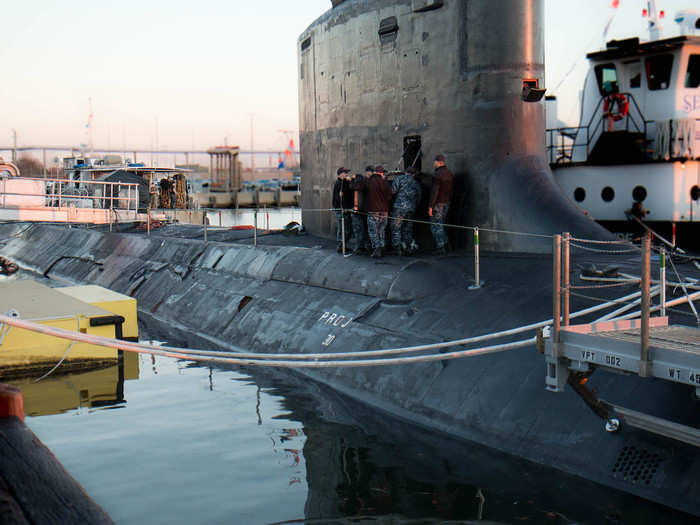

The ship also has a displacement of 7,800 tons and can hit depths of 800 feet or more.
Overall, the Warner has a payload of 38 weapons along with special operating forces.

The upper level is mostly living and sleeping (or birthing) quarters for the crew, while the middle level is for operational space and the lower level is where the nuclear reactor and other engineering devices are located.


"This is actually how we would get SEALs off the ship submerged," Eichenlaub said. "So you would stick a platoon of SEALs in here — 14 guys ... You fill this chamber with water until you match the outer sea pressure. Once the pressure in and outside the ship match, the hatch will lift off open and they can swim out of a fully filled chamber into open ocean."
Once the SEALs are in open water, they can retrieve any weapons or gear from the SOF box (which we saw being loaded into the tower in the first picture).






The sledgehammer of freedom is for the crew, while officers have their own sledgehammer — the "Sledgehammer of Democracy."




The Warner interestingly does not have a periscope and instead uses photonic masts built into the outside tower that provides a view above water that feeds into any monitor on the ship.


Sailors assigned to the ship are not considered submariners until they receive their warfare qualifications — meaning that they are proficient in every system on board. Until a sailor receives their warfare qualifications, their personal seals are put in this case for motivation.
Every US submarine has a fish bowl.



Read more about the Mark 48 here.




The S9G pressurized water nuclear reactor propels the ship to speeds of 25 mph and more.


 Saudi Arabia wants China to help fund its struggling $500 billion Neom megaproject. Investors may not be too excited.
Saudi Arabia wants China to help fund its struggling $500 billion Neom megaproject. Investors may not be too excited. I spent $2,000 for 7 nights in a 179-square-foot room on one of the world's largest cruise ships. Take a look inside my cabin.
I spent $2,000 for 7 nights in a 179-square-foot room on one of the world's largest cruise ships. Take a look inside my cabin. One of the world's only 5-star airlines seems to be considering asking business-class passengers to bring their own cutlery
One of the world's only 5-star airlines seems to be considering asking business-class passengers to bring their own cutlery Experts warn of rising temperatures in Bengaluru as Phase 2 of Lok Sabha elections draws near
Experts warn of rising temperatures in Bengaluru as Phase 2 of Lok Sabha elections draws near
 Axis Bank posts net profit of ₹7,129 cr in March quarter
Axis Bank posts net profit of ₹7,129 cr in March quarter
 7 Best tourist places to visit in Rishikesh in 2024
7 Best tourist places to visit in Rishikesh in 2024

Copyright © 2024. Times Internet Limited. All rights reserved.For reprint rights. Times Syndication Service.